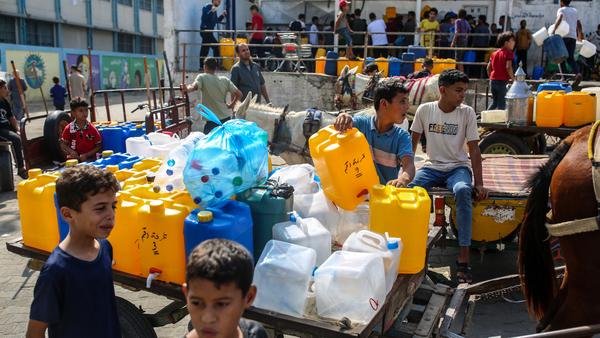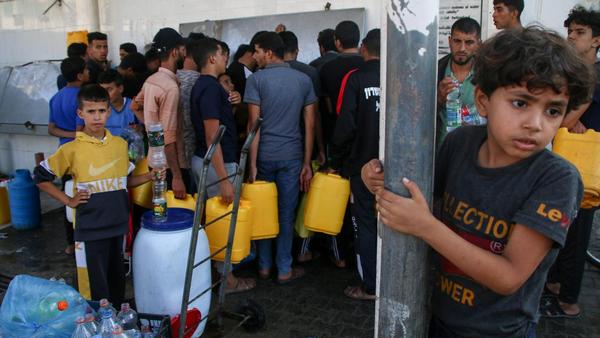Introduction
The Gaza Strip, home to over 2 million people, is facing an unprecedented water crisis that poses severe health risks and threatens the survival of its population. The ongoing conflict, combined with a longstanding blockade and damage to essential infrastructure, has left Gaza's water supply in a dire state. This article delves into the root causes, the current conditions, and potential solutions to the water crisis in Gaza.
The Water Crisis in Gaza
The Impact of Conflict on Water Infrastructure
The conflict in Gaza has caused extensive damage to water and sanitation infrastructure. Since October 7, 2023, daily bombardments have destroyed or severely damaged key facilities, rendering many of them inoperable. Out of 581 critical water and sanitation facilities, 37 have been destroyed, and 226 have suffered damage. This destruction has drastically reduced the availability of clean water, leaving nearly 93% of Gaza's population displaced and struggling to access safe drinking water.
Limited Access to Clean Water
Access to clean water in Gaza is alarmingly scarce. Before the conflict, the Coastal Aquifer Basin, Gaza's primary water source, was already heavily contaminated. Currently, 97% of Gaza’s water is unfit for human consumption, forcing residents to rely on brackish springs and unsafe agricultural wells. UNICEF reports that displaced families in southern Gaza have access to only 1.5 to 2 liters of water per person per day, far below the minimum requirement of 3 liters for survival.
Health Implications
The lack of clean water has led to significant health crises. There has been a dramatic increase in waterborne diseases, with over 75,000 cases of diarrhea reported among children under five since mid-October 2023. Additionally, the spread of diseases such as cholera and typhoid is imminent due to the dire sanitary conditions and overcrowded living environments.
Causes of the Water Crisis
Blockade and Resource Scarcity
The 16-year blockade imposed by Israel has severely restricted Gaza's access to essential resources, including materials needed for water treatment and sanitation. The blockade has prevented the repair and maintenance of critical infrastructure, exacerbating the water crisis.
Destruction of Infrastructure
The ongoing conflict has targeted water facilities, making it extremely difficult to supply clean water. Bombardments have disrupted the operations of desalination plants and water distribution networks, leading to widespread contamination and scarcity.
Efforts to Alleviate the Crisis
Humanitarian Aid and Challenges
Despite the dire situation, humanitarian aid efforts are ongoing. Organizations like UNICEF and CARE International have been providing bottled water, water containers, and hygiene kits to displaced families. However, the scale of aid is insufficient to meet the vast needs. The Rafah Crossing, the primary entry point for humanitarian aid, has seen limited traffic, with aid supplies trickling in slowly.
Need for Unrestricted Access
Humanitarian organizations have called for an immediate ceasefire and unrestricted access to deliver aid. Ensuring that aid can flow freely into Gaza is critical to preventing further deaths from waterborne diseases and dehydration.
Conclusion
The water crisis in Gaza is a humanitarian disaster of monumental proportions. Addressing this crisis requires immediate action to repair and rebuild water infrastructure, lift blockades to allow the flow of necessary materials, and ensure unrestricted humanitarian access. Without these measures, the health and survival of Gaza’s population remain in jeopardy.
FAQs
- What are the main causes of the water crisis in Gaza? The primary causes are the destruction of water infrastructure due to ongoing conflict, the longstanding blockade that limits access to necessary resources, and the contamination of the Coastal Aquifer Basin.
- How has the conflict impacted Gaza’s water supply? The conflict has destroyed or damaged critical water facilities, drastically reducing the availability of clean water and increasing reliance on contaminated sources.
- What are the health implications of the water crisis? The lack of clean water has led to a surge in waterborne diseases such as diarrhea, cholera, and typhoid, particularly among children under five.
- What efforts are being made to address the water crisis? Humanitarian organizations are providing bottled water, hygiene kits, and other supplies, but the scale of aid is insufficient. Calls for a ceasefire and unrestricted access are critical to addressing the crisis.
- What is needed to solve the water crisis in Gaza? Immediate repair of water infrastructure, lifting of blockades to allow resource flow, and ensuring unrestricted humanitarian access are essential to solving the crisis.
- How can international communities help? The international community can help by providing funding for humanitarian aid, advocating for a ceasefire, and pressuring for the lifting of blockades to allow necessary materials into Gaza.
💔 Donate to Support Gaza's Children
Your donation can make a significant difference in the lives of children affected by the crisis in Gaza. Donate now via Bitcoin or Stripe to provide essential aid and support.
Donate Now


